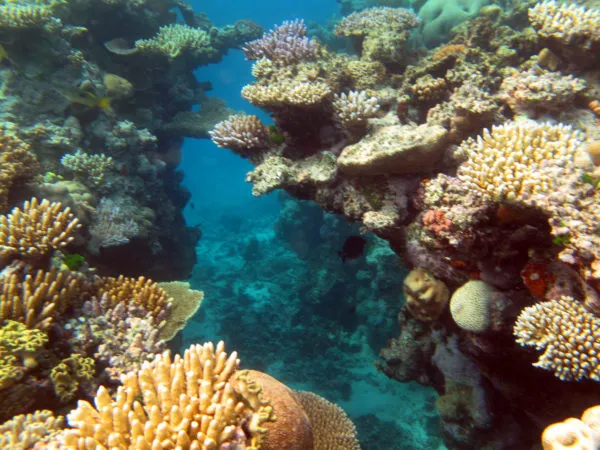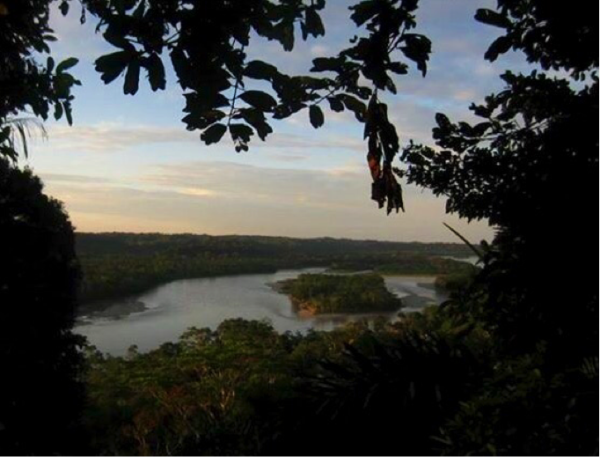If you didn’t know already (despite the countless posts that drowned people’s newsfeeds on Twitter and Facebook a couple weeks ago), the world’s largest coral reef ecosystem was regrettably pronounced dead. Pictures of the white, colorless coral reefs surfaced the web and erupted into an immediate negative reaction on social media. However, various sources have proclaimed that this assertion was false, for the Great Barrier Reef is not completely dead. According to CNN, “there is a big difference between dead and dying.” Despite the uncertainty of the Great Barrier Reef’s death, it is impossible to ignore the overbearing reality of this priceless ecosystem’s likely extinction.

This incident reminded me of my own experience two summers ago when I traveled to Ecuador and visited the actual living and breathing heart of the earth — the Amazon Rainforest. I relished in the abundance of greenery and vibrant vegetation curling around the trunks of towering trees I had never seen, in the breathtaking skies and exotic flowers — a stark contrast to the dry concrete jungle of my home in sunny yet smoggy Los Angeles. I was shocked when I learned that about 150 acres of the rainforest are cut down every single minute. To put this severe deforestation into full perspective, about 165,600 football fields of oxygen-providing trees are lost every day!
Throughout the trip, I was introduced to the eco-friendly practices that the local communities had begun to explore. Through the simple act of avoiding food waste to the development of sustainable water systems, I learned then and there about the raw importance of being environmentally conscious. One of the highlights of this experience was when the indigenous Quechuan women I met taught me how they cleverly used the natural resources of the rainforest — from seeds to soil clay — to create handcrafted, sustainable jewelry. Growing up in a major urbanized area my entire life, I had never been directly exposed to the organic beauty of our planet, let alone the wonders of the shrinking Amazon — a place my own children might not even have the chance to see.
Immersed in a community unlike my own, I began to wonder how I could start being more ecologically aware about my actions. How could I reduce my carbon footprint? How could I make a difference?
Adapting to an environmentally conscious lifestyle is a small act that can go a long way. If you’d like to make our planet a better place, here are some ways to get started:
- Find ways to get involved directly on campus by joining groups such as the Students for a Sustainable Stanford.
- Make sure to look out for the second application round for the Bing Overseas Seminar in Ecuador, which will focus on the sustainable conservation of the forest’s diversity amidst development and its inhabitants.
- Learn the difference between compost, landfill and recycle bins. Compost bins are for food leftovers/scraps and plant trimmings, while recycle bins are for plastic and paper.
- Reduce your shower times, turn off the lights when not in use and unplug any appliances/electronics when not in use. All of these simple acts conserve water or energy!
- For laundry, try washing full loads to conserve water next time, and opt for a “cold wash” to conserve energy.
- Try not to waste so much food for your next meals! If you want to have an even greater impact, try “Meatless Mondays.” The production of meat involves greater expenses, use of water and transportation — all of which add an even greater carbon footprint to our planet.
- Thrift shopping is still trendy, right? We “reduce” our consumerism and “reuse” every time we buy secondhand clothes. Check out the Goodwill of Silicon Valley in Palo Alto — it’s just a 15-minute bike ride away!
- Giving gifts is always a nice way to brighten someone’s day. But you know what’s even better? Homemade gifts! Making your own gifts is an easy way to reduce waste like paper, plastic and packaging.
As Gandhi once said, “The good man is the friend of all living things.”

Contact Clarissa Gutierrez at cgutier ‘at’ stanford.edu.